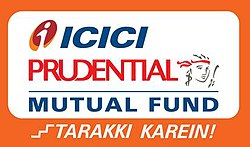ELSS Mutual Fund

1Y
3Y
5Y
SI
Nav
Risk

1Y
3Y
5Y
SI
Nav
Risk

1Y
3Y
SI
Nav
Risk

1Y
3Y
5Y
SI
Nav
Risk

1Y
3Y
5Y
SI
Nav
Risk

1Y
SI
Nav
Risk

1Y
3Y
5Y
SI
Nav
Risk

1Y
3Y
5Y
SI
Nav
Risk

1Y
3Y
5Y
SI
Nav
Risk

1Y
3Y
5Y
SI
Nav
Risk
The Equity-linked Savings Scheme is a type of equity mutual fund that not only offers market-linked returns but also provides tax benefits under Section 80C of the Income Tax Act. With a lock-in period of just 3 years, ELSS is the shortest among all tax-saving instruments in India, offering the potential for long-term wealth creation through equity exposure.
In 2025, ELSS funds remain popular among salaried individuals, new investors, and tax planners seeking a blend of tax savings and investment growth. With the reintroduction of tax-saving incentives under the old regime, many investors are choosing ELSS over traditional instruments like PPF or fixed deposits due to their higher return potential.
What Is an ELSS Fund?
ELSS funds are equity-oriented mutual funds that:
- Invest at least 80% of their portfolio in equities and equity-related instruments
- Come with a mandatory lock-in of 3 years
- Qualify for tax deduction of up to ₹1.5 lakh per financial year under Section 80C
- Offer the potential for market-linked capital appreciation over the long term
Unlike PPF or NSC, which offer fixed returns, ELSS returns are market-dependent, making them ideal for long-term investors comfortable with equity risk.
Features of ELSS Mutual Funds
- Tax Benefits Under 80C: You can claim a deduction of up to ₹1.5 lakh annually under Section 80C. This can lead to tax savings of up to ₹46,800 (if in the highest tax bracket).
- 3-Year Lock-In Period: The shortest among all 80C investments, allowing earlier liquidity compared to PPF (15 years) or NSC (5 years).
- Equity-Oriented Investment: Most ELSS funds are diversified equity funds that invest across market capitalizations, offering the potential for long-term capital growth.
- SIP and Lump Sum Options: You can invest either in one go or via monthly SIPs. Each SIP installment, however, is subject to its 3-year lock-in.
- Growth and IDCW Options: Investors can choose between the Growth option (returns are generated through capital appreciation) or the IDCW option (dividends may be declared periodically, taxable according to the applicable tax slab).
ELSS in 2025: Why It Still Makes Sense
Even though many salaried individuals now opt for the new tax regime (which doesn't allow 80C deductions), a significant number continue with the old regime — especially those claiming deductions for HRA, home loan interest, and insurance. For these individuals, ELSS remains:
- The only market-linked option under 80C
- The most liquid 80C instrument
- A better return-generating option compared to traditional tax savers
Moreover, with India's equity markets showing strong mid-to-long-term performance, ELSS has emerged as a gateway for tax-conscious investors to participate in equity growth.
Advantages of ELSS Funds
- Dual benefit of tax savings + wealth creation
- Shortest lock-in among tax-saving options
- Encourages disciplined, long-term investing
- Ideal entry point for new investors in mutual funds
- SIP-friendly; start with as low as ₹500/month
Risks to Keep in Mind
- Returns are not guaranteed; they depend on stock market performance
- Market volatility can impact short-term NAV, though lock-in protects against panic selling
- Not suitable for ultra-conservative investors
Who Should Invest in ELSS?
- Salaried individuals under the old tax regime seeking 80C deductions
- First-time mutual fund investors looking to start with a goal-linked investment
- Long-term investors with a 3- to 5-year+ horizon
- Individuals looking to balance tax saving and market participation
Performance Snapshot (2020–2025)
Many ELSS funds have delivered competitive returns over the past few years:
- Quant ELSS Tax Saver Fund: ~27% CAGR (5-year)
- Axis Long Term Equity Fund: ~14% CAGR (5-year)
- Mirae Asset Tax Saver Fund: ~17.8% CAGR (5-year)
- Canara Robeco ELSS: ~16.5% CAGR (5-year)
The overall performance of the equity market has influenced returns. While ELSS funds do not guarantee returns, long-term investment generally reduces the impact of market volatility.
Taxation on ELSS Funds
- LTCG (after 3 years): 10% on gains above ₹1 lakh (no indexation)
- STCG: Not applicable due to mandatory 3-year lock-in
- Dividends (IDCW): Taxed as per income slab; TDS applies above ₹5,000/year
Key Points Before You Invest
- Choose the Growth option if your goal is long-term wealth creation
- Prefer the SIP route to average out market fluctuations
- Evaluate the fund's past performance, consistency, and portfolio composition
- Avoid redeeming immediately after 3 years if market conditions are unfavorable — you can hold longer
Get In Touch
Interested in exploring more about JezzMoney Mutual Fund Distributors Software? Submit the form, and we will respond quickly.
Get Expert Advice on Investment in Mutual Funds!
- Certified mutual fund distributors around India will reach out to help you build your future.
- Connect with trusted mutual fund distributors and find them from your city and pincode area.
- JezzMoney is only the mediator to help you connect with these certified professionals.
- It is your obligation to gather accurate information when you receive contact from our platform.